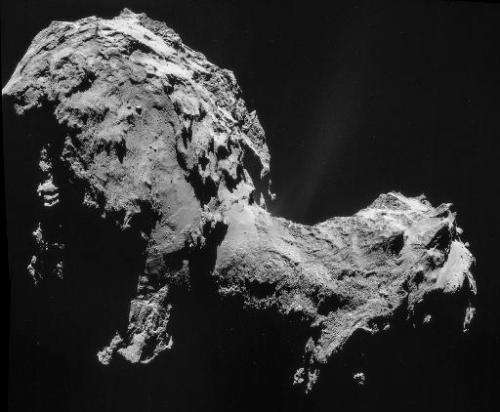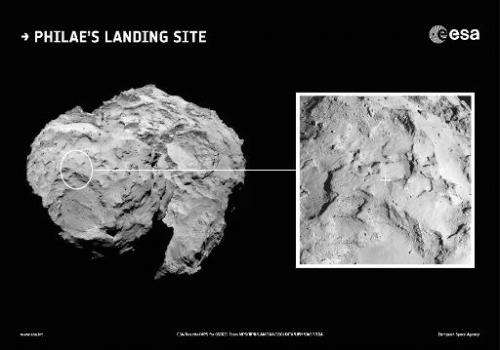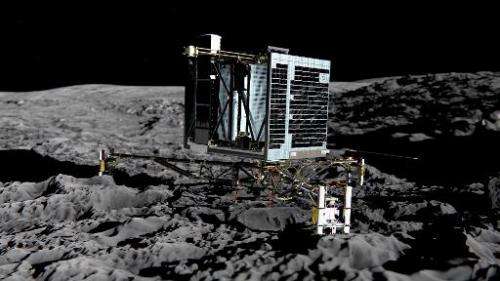Final checks for first-ever comet landing (Update)

Scientists were going through a final systems checklist Tuesday for the first-ever landing on a comet, the culmination of a dream to explore the origins of the Solar System.
Mission control in Darmstadt, Germany, gave the green light to the first in four "go/no-go" decisions on whether to press ahead with Wednesday's high-risk operation, or abort.
"We got the first go, the first go-ahead," a European Space Agency (ESA) spokeswoman said.
Carried by the orbiter Rosetta, the probe Philae is a 100-kilo (220-pound) lander carrying 10 instruments for the first-ever boots-on-the ground analysis of a comet.
Astrophysicists hope Philae will unlock knowledge about the origins of the Solar System and even life on Earth.
The robot lab has travelled 6.5 billion kilometres (four billion miles) on its mothership since the pair were launched more than a decade ago.
But its solo voyage of about 20km will be the most perilous part.
That is the distance to Comet 67P/Churyumov-Gerasimenko that Philae must cover after separation, scheduled for 0835 GMT on Wednesday.
Touchdown will take place about seven hours later, with a confirmation signal expected on Earth at about 1600 GMT.
For all this to happen, Rosetta first has to perform a high-precision ballet, more than 500 million km from home.
Philae has no thrusters, which means Rosetta must eject it when the velocity and trajectory are exactly right.

A tiny inaccuracy means any error in its course will widen during the descent—the probe could miss its 900 x 600 metre (3,000 x 2,000 foot) landing site and smash into rocks or cliffs nearby.
"Failure is not an option," Philae scientist Jean-Pierre Bibring of the Paris-Sud University in France said Monday.
Early Wednesday, Rosetta will swerve inwards towards the comet and burn its thrusters, the final pre-ejection manoeuvre.
Scant time will be available to verify the calculations are right before the "go" for separation is given.
Adding to the tension is the unknown surface of Comet "67P". It could be tough or brittle, soft or crumbly.
Fridge or feather
Philae will land at a gentle 3.5 km per hour, firing two harpoons into a surface the engineers fervently hope will provide grip.
Ice screws at the end of its three gangly legs will then be driven into the comet, while a gas thruster on the top of the probe goes into action to prevent the lab bouncing back into space.
The size and heft of a refrigerator back on Earth, Philae will weigh just one gramme (0.04 of an ounce)—or less than a feather—on the comet.

One of the most complex and ambitious unmanned programmes in space history, the 1.3-billion-euro ($1.6-billion) Rosetta mission was approved back in 1993.
It took a decade to design and build, and after its launch, another decade to catch up with the comet, using the gravity of Earth and Mars as slingshots with which to build up speed.
Philae accounts for about a fifth of the haul of scientific data expected from the mission in its entirety.
If Wednesday's landing is called off, the team will have another chance in about two weeks when Rosetta and her payload are at the same point in orbit, according to Paolo Ferri, head of missions operations.

Comets are believed to be primordial ice and carbon dust left over from the building of the Solar System.
They are doomed to circle the Sun in orbits that can range from a few years to millennia.
According to a leading theory, comets pounded the fledgling Earth 4.6 billion years ago, providing it with carbon molecules and precious water—part of the tool kit for life.
"Comets are treasure chests," said Mark McCaughrean, senior ESA scientific advisor. "We could be comet stuff ourselves."
© 2014 AFP





















